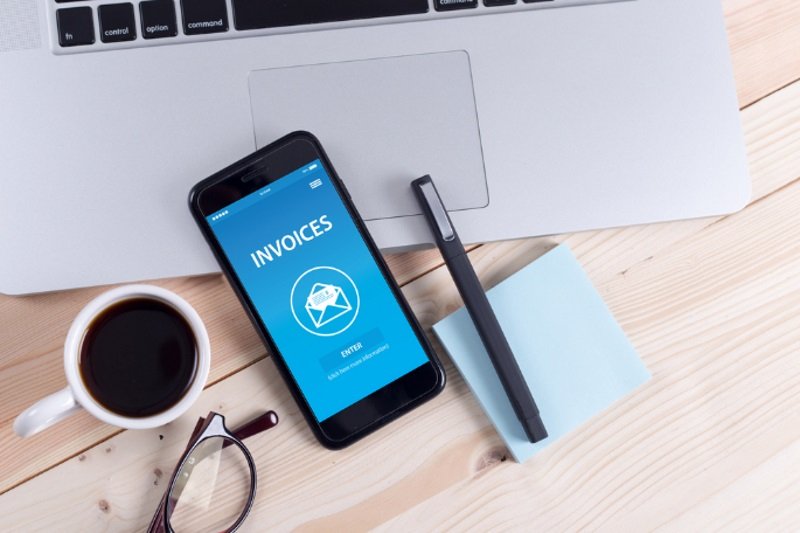
The basics of running a successful business includes how to easily create or generate an invoice. The best means of doing this is via a trusted and reputable invoice app which takes the leg work out of creating invoices, are seamless and improves the propensity of you being paid quickly and efficiently! Some leading accounting software providers even offer a free invoicing app for freelancers & small business owners (like the one in the link!)
An invoice app will become extremely beneficial to you in a short time, as it’s accessible across all your devices, including your mobile, meaning you can easily send invoices and accept payments on the go, at home, or at the office.
Getting paid for your services on time, you would think or hope – is pretty direct from the outset. However, those new to launching their own SME may soon recognise there are drawbacks and challenges that can come with an inefficient invoicing system which makes the process clunky and troublesome. That means you’re then invoicing your clients late and you’re getting paid even later. Hello invoice app!
By following some simple invoicing tips, you can help boost your cash flow and reduce the risk of unpaid invoices. Try these handy hints and tips on how to create an invoice with simplicity when sending your next invoice!
General Invoicing Suggestions To Keep In Mind
- Always include your payment terms on the invoice and ensure your customer is aware of them. For example, requiring payment within 30 days of receiving a correct, valid tax invoice.
- Be timely and predictable. Being prompt when sending your tax invoice ensures that you’re paid as soon as possible. If you need to send regular invoices, endeavour sending them at the same time of day so that your customer knows when to expect them and it becomes a regular pattern to them.
- Offer a variety of payment options and state these clearly on your invoice.
- Consider sending your invoices via email. It can decrease the chance of losing your invoice in the mail and helps encourage prompt payments.
- Be detailed in your item description field or section. Being detailed and providing a full account of the product or service you provided, will help reduce any time consuming disputes.
- And note, ownership of any goods to be delivered does not pass to the purchaser until the invoice is paid in full.
What To Include In A Tax Invoice
Tax invoices must include at least seven pieces of information to be binding. Depending on the value of the invoice and what you sell, there may be more requirements.
For sales of less than $1000, generally the seven details are:
- The words ‘Tax Invoice’ must be used – for user friendliness, this sits at the top.
- Your identity as the seller, such as your business name or trading name. Contact details are optional, but recommended.
- Your ABN or ACN (if based in Australia).
- The date you created the tax invoice.
- A clear list and description of the items sold, including quantity and price.
- The GST amount (if any) payable. You can display GST for each item in a separate column, or within the total price. If you choose not to display it separately, use a statement such as ‘Total includes GST’ as this is needed for the next detail.
- The extent to which each item sold includes GST. You’ll meet this requirement if you either:
- show the GST amount for each item
- clearly state that the total price includes GST.
Tax invoices for sales of $1000 or more also need to show the buyers identity or ABN.
Invoicing Software
Implementing a complete, reputable accounting software program should be one of your first steps when launching your own business too – regardless of the size of your business. Quality programs boast the following key components and inclusions, such as safe and secure cloud storage and access. They also offer a wide range of features and templates to best suit your business’s needs, contain multi-user capabilities, whilst simultaneously being user friendly across mobile applications and multiple devices (like invoice apps).
This is an article provided by our partners network. It might not necessarily reflect the views or opinions of our editorial team and management.
Contributed content

Founder Dinis Guarda
IntelligentHQ Your New Business Network.
IntelligentHQ is a Business network and an expert source for finance, capital markets and intelligence for thousands of global business professionals, startups, and companies.
We exist at the point of intersection between technology, social media, finance and innovation.
IntelligentHQ leverages innovation and scale of social digital technology, analytics, news, and distribution to create an unparalleled, full digital medium and social business networks spectrum.
IntelligentHQ is working hard, to become a trusted, and indispensable source of business news and analytics, within financial services and its associated supply chains and ecosystems





























